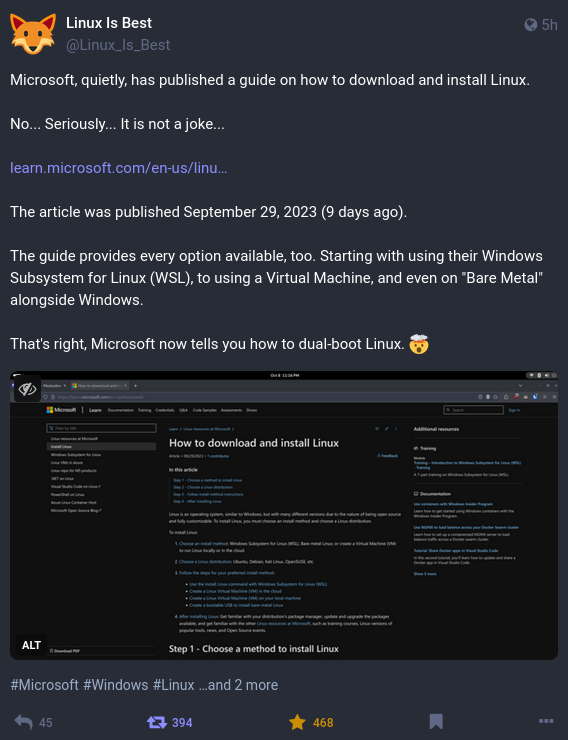this post was submitted on 09 Oct 2023
1865 points (98.2% liked)
Linux
59999 readers
816 users here now
From Wikipedia, the free encyclopedia
Linux is a family of open source Unix-like operating systems based on the Linux kernel, an operating system kernel first released on September 17, 1991 by Linus Torvalds. Linux is typically packaged in a Linux distribution (or distro for short).
Distributions include the Linux kernel and supporting system software and libraries, many of which are provided by the GNU Project. Many Linux distributions use the word "Linux" in their name, but the Free Software Foundation uses the name GNU/Linux to emphasize the importance of GNU software, causing some controversy.
Rules
- Posts must be relevant to operating systems running the Linux kernel. GNU/Linux or otherwise.
- No misinformation
- No NSFW content
- No hate speech, bigotry, etc
Related Communities
Community icon by Alpár-Etele Méder, licensed under CC BY 3.0
founded 6 years ago
MODERATORS
you are viewing a single comment's thread
view the rest of the comments
view the rest of the comments

I did a Mint install a few weeks ago, and I'd say that if you want to preserve some existing OS (i.e. dual boot), then it isn't super easy. You have to tell it what new partitions you want - and therefore you have to know something about what partitions you should have. The good news is that you don't actually need any swap or home partition. You can just put it all on one partition - but I don't think it's obvious what to do.
On the other hand, if you aren't trying to preserve something you already have, you can tell the installer to just go with all the defaults, and then you don't have to know anything about it.
Note: Microsoft's guide doesn't mention any of that detail. It basically just says to follow the instructions of the installer.
Ou can dual-boot with the default options, but iirc if you want to choose how much of your Windows partition you want to use you have to do it manually. Haven't done it in ages though so I could be wrong